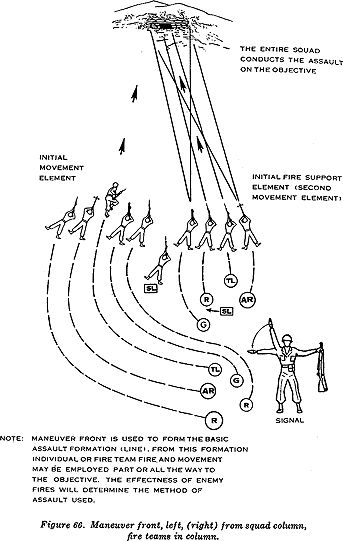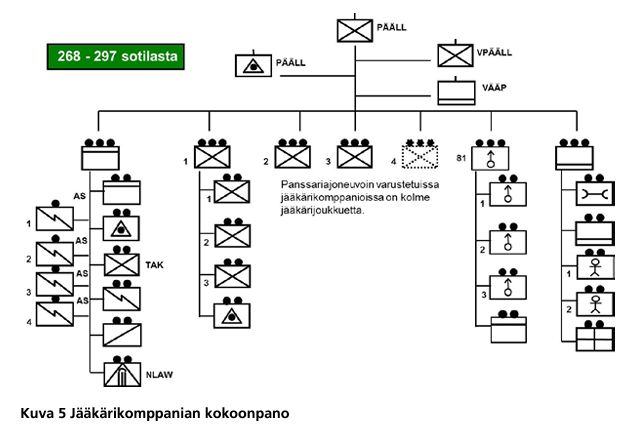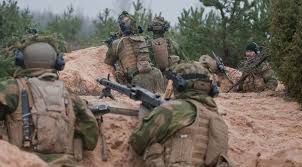
Finnish OSINT group. Currently following the Russian invasion of Ukraine.
Don't DM, Email us:
contact@blackbirdgroup.fi
Map:
https://tinyurl.com/BlackbirdMap
Our site:
https://blackbirdgroup.fi/
Multiple bridges in the area have been destroyed, leaving some Ukrainian defenders with rivers behind their backs.
4/

Multiple bridges in the area have been destroyed, leaving some Ukrainian defenders with rivers behind their backs.
4/
The northern part of the salient has been abandoned, with Russians capturing Malaya Lokanaya.
1/

The northern part of the salient has been abandoned, with Russians capturing Malaya Lokanaya.
1/
As always our activity is made possible by Jenni and Antti Wihurin Rahasto and their generous grant.
17/17

As always our activity is made possible by Jenni and Antti Wihurin Rahasto and their generous grant.
17/17
16/

16/
However, we see a lack of supporting fires and other fire-support elements. It's unclear why North Koreans don't seem to receive upper-echelon artillery support, although drones seem to be hunting their organic mortars.
15/

However, we see a lack of supporting fires and other fire-support elements. It's unclear why North Koreans don't seem to receive upper-echelon artillery support, although drones seem to be hunting their organic mortars.
15/
Reports of North Korean troops in Kursk often mention “human wave” tactics. This narrative oversimplifies what’s likely happening: They’re employing basic, scalable infantry drills. These are rooted in fire and movement, not mindless rushing.
14/

Reports of North Korean troops in Kursk often mention “human wave” tactics. This narrative oversimplifies what’s likely happening: They’re employing basic, scalable infantry drills. These are rooted in fire and movement, not mindless rushing.
14/
Western forces have rarely had to fight in a near-peer environment post-WW2, and have almost always had the superiority of fires and other supporting elements.
13/

Western forces have rarely had to fight in a near-peer environment post-WW2, and have almost always had the superiority of fires and other supporting elements.
13/
Notable examples include Coles Charge at Carentan in 1944 and the Finnish assault at Äyräpää Church in 1940.
Also pictured: Warfare History Network on the Battle of Best, Holland, September 1944
12/


Notable examples include Coles Charge at Carentan in 1944 and the Finnish assault at Äyräpää Church in 1940.
Also pictured: Warfare History Network on the Battle of Best, Holland, September 1944
12/
Success often depends on:
Support from higher-echelon weapons (artillery, mortars, drones).
Coordination with heavier forces (if available).
But when resources are limited, light infantry must rely solely on organic weapons.
11/

Success often depends on:
Support from higher-echelon weapons (artillery, mortars, drones).
Coordination with heavier forces (if available).
But when resources are limited, light infantry must rely solely on organic weapons.
11/
There’s no viable flanking route.
Terrain is open
Time is of the essence.
Light infantry attacking prepared positions will likely take heavy losses—it’s the nature of the fight.
10/

There’s no viable flanking route.
Terrain is open
Time is of the essence.
Light infantry attacking prepared positions will likely take heavy losses—it’s the nature of the fight.
10/
When advancing, infantry ideally uses cover and concealment to:
Avoid being seen.
Minimize casualties while closing the distance. Maneuver to the enemy's flank or weak point.
But the terrain and situation don't always allow this.
9/

When advancing, infantry ideally uses cover and concealment to:
Avoid being seen.
Minimize casualties while closing the distance. Maneuver to the enemy's flank or weak point.
But the terrain and situation don't always allow this.
9/
Without fire and movement, light infantry is just a vulnerable mass of soldiers.
8/

Without fire and movement, light infantry is just a vulnerable mass of soldiers.
8/
This is the bread and butter of infantry tactics, scaled from individuals to squads:
While one element suppresses the enemy (fire), another advances (movement). “I’m up, they see me, I’m down” – the mantra of infantry advancing under fire.
7/

This is the bread and butter of infantry tactics, scaled from individuals to squads:
While one element suppresses the enemy (fire), another advances (movement). “I’m up, they see me, I’m down” – the mantra of infantry advancing under fire.
7/
Units operate in fireteams, squads, platoons, and companies. Core principles: Fire and movement.
6/

Units operate in fireteams, squads, platoons, and companies. Core principles: Fire and movement.
6/
Its flexibility comes at a cost: higher casualties, especially in frontal assaults.
5/

Its flexibility comes at a cost: higher casualties, especially in frontal assaults.
5/
Post-Cold War world Western forces are mechanized, but light infantry remains because:
It’s cheap.
Has a smaller logistical footprint (easier to feed/supply).
Can be rapidly deployed.
Offers superior tactical mobility in rough terrain.
4/

Post-Cold War world Western forces are mechanized, but light infantry remains because:
It’s cheap.
Has a smaller logistical footprint (easier to feed/supply).
Can be rapidly deployed.
Offers superior tactical mobility in rough terrain.
4/
Most WWII infantry would be classified as “light” today. No armored vehicles, minimal mechanization, and reliant on basic infantry tactics.
Modern light infantry is generally built for flexibility, not brute force, at least in the west.
3/

Most WWII infantry would be classified as “light” today. No armored vehicles, minimal mechanization, and reliant on basic infantry tactics.
Modern light infantry is generally built for flexibility, not brute force, at least in the west.
3/
At its core, light infantry are troops that:
Operate on foot in combat.
Have little to no support from vehicles.
Move organic support (mortars, MGs) on foot or trucks. Rely primarily on infantry weapons to fight.
Pictured: Finnish Jäger Company
2/

At its core, light infantry are troops that:
Operate on foot in combat.
Have little to no support from vehicles.
Move organic support (mortars, MGs) on foot or trucks. Rely primarily on infantry weapons to fight.
Pictured: Finnish Jäger Company
2/
Why does our @jjhelin.bsky.social keep rejecting the "human waves" narrative, instead calling the reported North Korean attacks in Kursk "basic infantry drills"?
Let’s dive into light infantry on the attack and why this distinction matters.
1/

Why does our @jjhelin.bsky.social keep rejecting the "human waves" narrative, instead calling the reported North Korean attacks in Kursk "basic infantry drills"?
Let’s dive into light infantry on the attack and why this distinction matters.
1/

